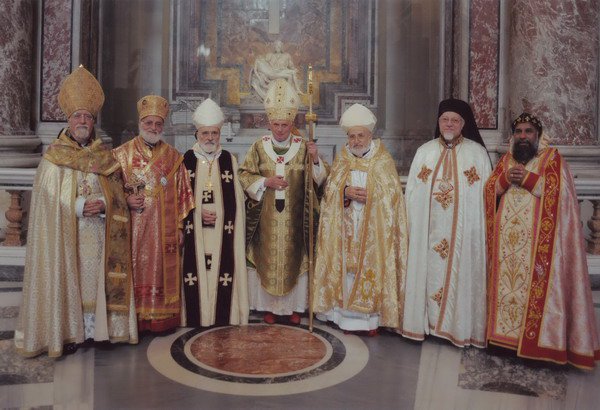How Many Catholic Churches Are There?
Posted: 13 October 2014
 If someone were to ask you how many Catholic Churches there are in the world, what would be your response? Not small ‘c’ churches referring to church buildings, but rather, Church with a capital ‘C’, indicating the grouping of believers who call themselves Catholic. You may very well respond to the question that there is one Catholic Church and to a large extent you would be correct. One can look to the Scriptures to see that the Lord deliberately founded a living Church built on his Apostles in order that his teachings and sacraments would continue down through time. Indeed the word Church comes out of the Greek verb ‘to gather together’, so the Church at its heart is a gathering of people.
If someone were to ask you how many Catholic Churches there are in the world, what would be your response? Not small ‘c’ churches referring to church buildings, but rather, Church with a capital ‘C’, indicating the grouping of believers who call themselves Catholic. You may very well respond to the question that there is one Catholic Church and to a large extent you would be correct. One can look to the Scriptures to see that the Lord deliberately founded a living Church built on his Apostles in order that his teachings and sacraments would continue down through time. Indeed the word Church comes out of the Greek verb ‘to gather together’, so the Church at its heart is a gathering of people.
While there is one Catholic Church though, that Church is made present in 23 Churches. Yes, that is correct, there are 23 Catholic Churches, and only one of those Churches is the Western, or Latin Church. The other 22 Churches are collectively termed the Eastern Catholic Churches but they are by no means all the same. Some of the Eastern Churches include the Melkite, Maronite, Ukrainian and Coptic Churches. And nor are these Eastern Churches mere annexes of the Latin Church. Each of the 22 Eastern Churches are autonomous and self-governing with their own Patriarch, Major Archbishop or Bishop. While these Churches were born in places such as the Middle East, India and Eastern Europe, they are not primarily cultural groups in the same way as one might be a French Catholic or an Indonesian Catholic (both of whom are still members of the Latin Church). Each of the 22 Eastern Churches preserve unique liturgical, devotional and theological traditions that demonstrate the authentic universality of the Catholic Church. For the most part, the Eastern Catholic Churches choose their own Bishops yet they remain Catholic because they are in full communion with the successor of Peter. Read the rest of this entry »








